In this article
You may have heard of the Cavalier King Charles Spaniel and the King Charles Spaniel, also called the English Toy Spaniel, and wondered if they are the same thing. They look very similar, but there are some differences. Both breeds have been around for centuries, and both types of spaniels share common ancestors from similar breeding stock. However, they were bred and developed differently over time, leading them to be two separate breeds today. Both the King Charles Spaniel and the Cavalier King can differ in appearance, size, build, and temperament, as well as their preferred activities and training requirements.

Visual Differences
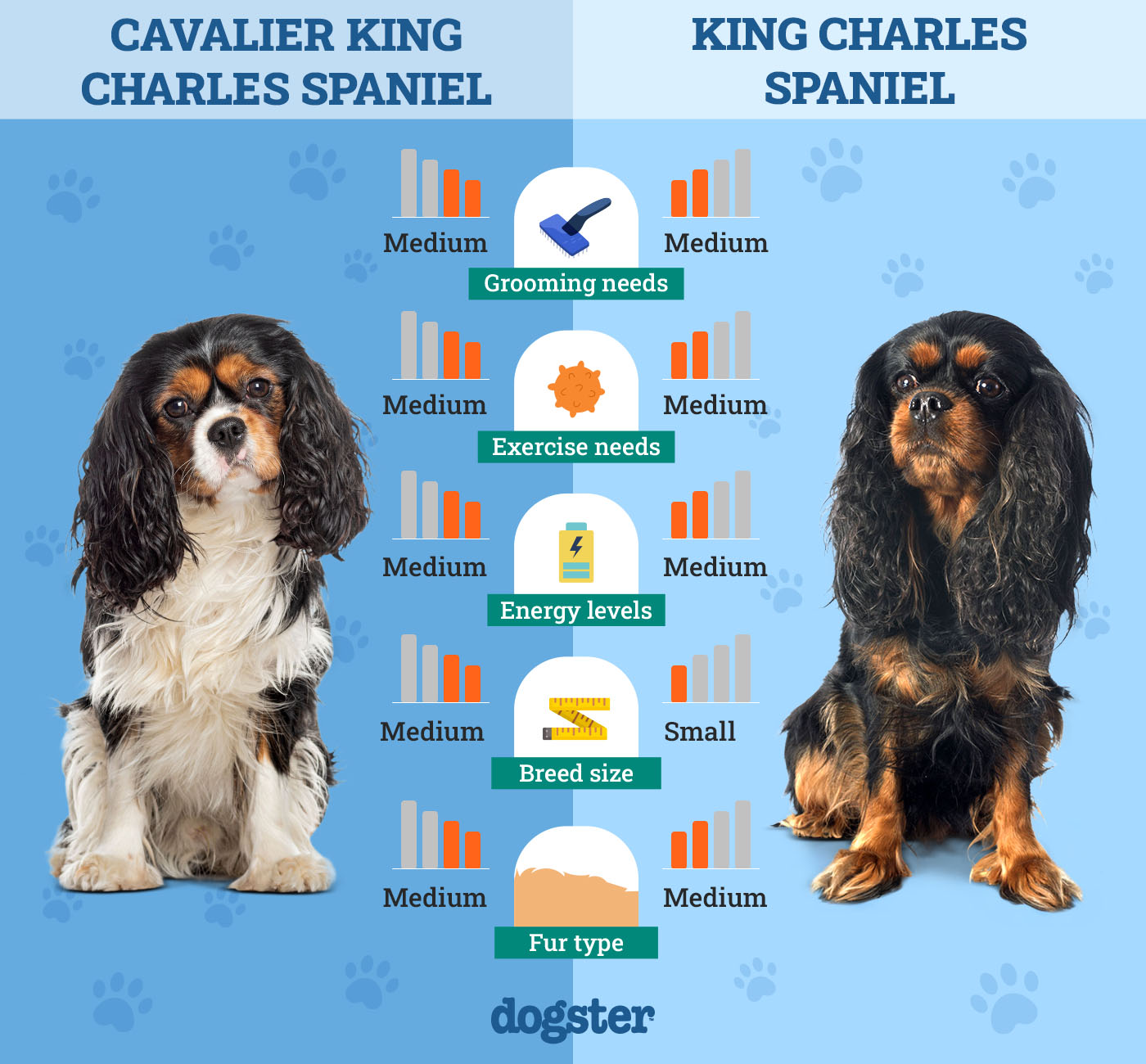
At a Glance
- Average height (adult): 12-13 inches
- Average weight (adult): 13-18 pounds
- Lifespan: 9-14 years
- Exercise: 20-30 minutes a day
- Grooming needs: Low shedding breed, weekly brushing
- Family-friendly: Yes
- Other pet-friendly: Yes, but should be socialized
- Trainability: Easy to train, intelligent, eager to please
- Average height (adult): 9-10 inches
- Average weight (adult): 13-18 pounds
- Lifespan: 10-12 years
- Exercise: 20-30 minutes a day
- Grooming needs: Low to moderate shedders, at least weekly brushing
- Family-friendly: Yes
- Other pet-friendly: Yes, but should be socialized
- Trainability: Easy to train, intelligent, eager to please
The main difference between these breeds is that King Charles Spaniels tend to be a little smaller on average and have a shorter snout and more dome-shaped head.

Cavalier King Charles Spaniel Overview
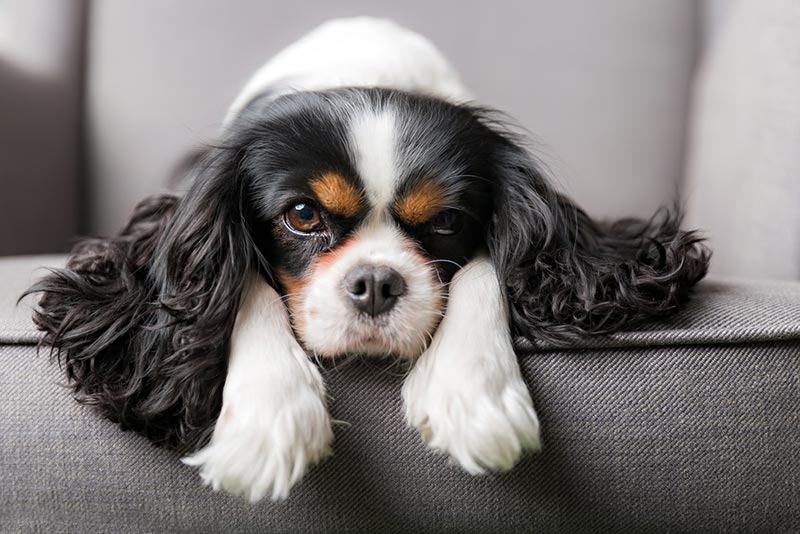
Personality
The most important thing to know about buying a Cavalier King Charles Spaniel is that they are absolutely a companion dog. Cavaliers love to be with their family and crave lots of attention and affection. This means that if you work long hours away from home, this breed probably isn’t a good match for you. They tend to get a bit anxious if they are left alone for extended periods of time, especially if they haven’t been trained to do so.
Cavaliers can be shy or skittish around new people and loud noises. Though they can get along well with other animals, if you have other pets in the home, you’ll want to make sure your Cavalier gets plenty of one-on-one attention, so they don’t feel left out.
Exercise Requirements
Cavaliers are fairly low-energy when compared to other breeds. While they should get daily exercise, generally one daily walk around the neighborhood is about all you need to keep your Cavalier happy and healthy.
If you want to do more with your dog, you can try some training to increase their skills. Agility training is a wonderful way to get your dog moving and feeling accomplished. You should also keep in mind that Cavaliers have short legs and long backs. This can make it difficult for them to get up and down from the floor if you have a high couch or bed. Be sure to provide your dog with a sturdy and comfortable place to sit or lie down where they can easily reach it. FYI: They love sleeping with their owners.
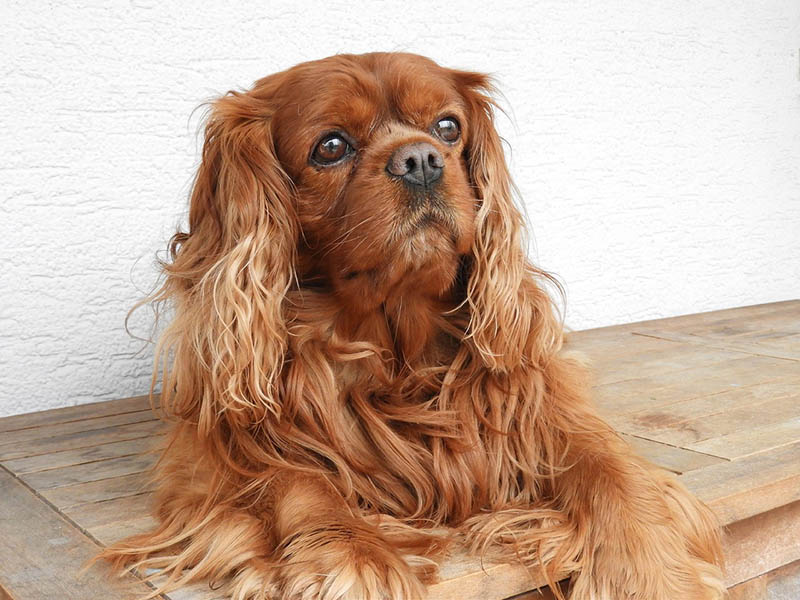
Training
Cavaliers are intelligent dogs and can be easy to train. They also have a short attention span and may get bored with a particular training method if it takes too long to see results. Be sure to mix up the types of training you do with your dog, so they stay interested.
Start basic training as soon as you bring your dog home. Teach them to sit, stay, and come when you call their name. This will help you keep your dog safe and stop them from getting into trouble while you’re still getting to know them.
Maintenance
Cavaliers have a wavy, medium-length coat that needs to be brushed at least once a week, preferably more for dogs that spend a lot of time outside. Use a pin brush or rubber comb to remove any loose hair and distribute any natural oils throughout your dog’s coat. Your dog’s ears should be checked regularly for signs of infection, such as redness, irritation, or odor.
You can clean their ears with a cotton ball and a veterinarian-approved ear cleaner. Trim their toenails as needed and brush their teeth regularly.
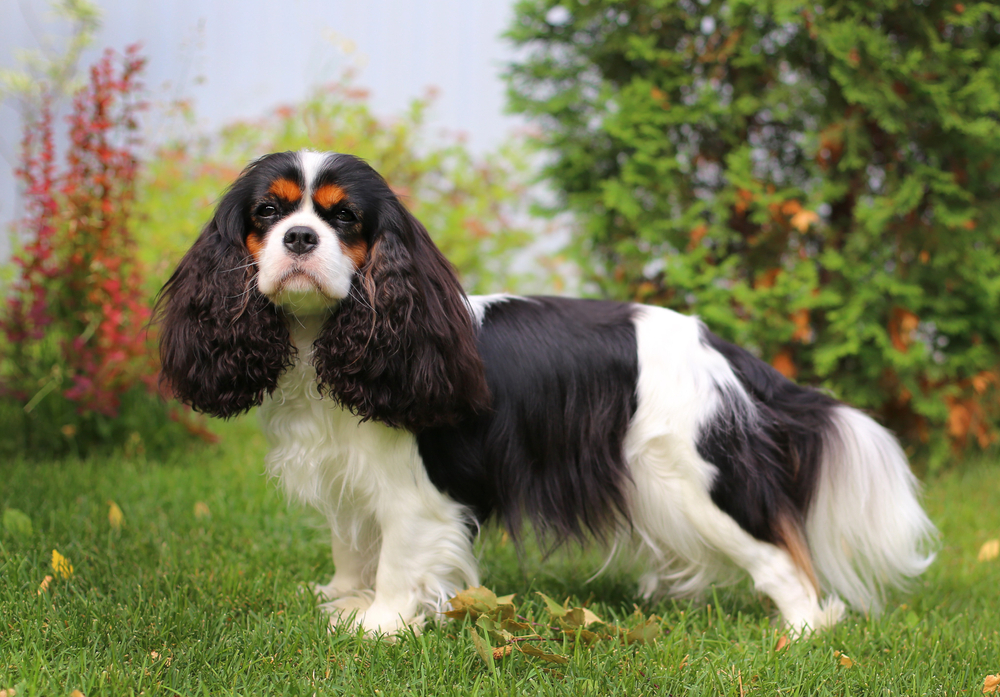
Breeding History
Cavalier King Charles Spaniels were originally bred as companion animals in Britain. As their popularity grew, breeders began to focus more on the aesthetic qualities of the breed, creating the dogs that we see today.
The Cavalier King Charles Spaniel is a non-sporting breed and is recognized by both the AKC and the CKC. While the Cavalier King Charles Spaniel has a long and successful history, their popularity created a market where less conscientious breeders could thrive. This has led to an increase in health issues in the breed.
- Syringomyelia
- Eye diseases
- Mitral valve disease
- Joint issues such as hip dysplasia and patellar luxation
Suitable For
These dogs do well in small or large families. They are also great with children or perfect for single homes. Cavaliers can do well in apartments or small living spaces, but they also can enjoy some outdoor time in a fenced yard.

King Charles Spaniel Overview
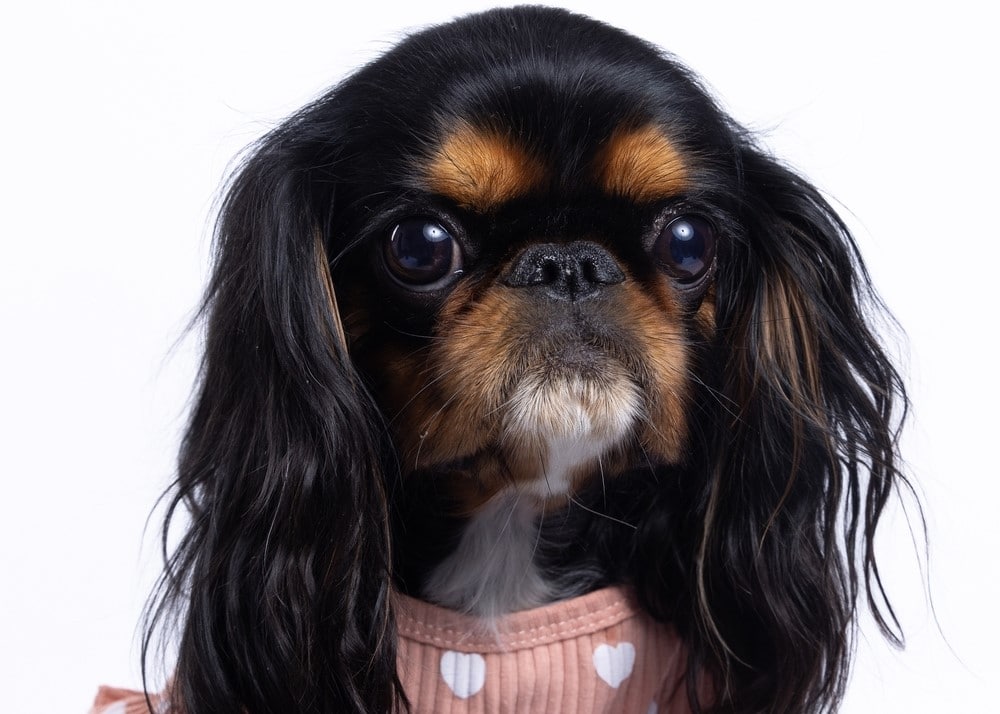
Personality
The King Charles Spaniel is a sensitive, affectionate family dog that thrives on human companionship. They’re playful and mischievous and often eager to please.
The King Charles Spaniel is an eager learner but can be stubborn at times. They are sensitive dogs that respond best to positive reinforcement training methods. They are not ideal dogs for people who work long hours, as they do better when they have consistent daily interaction with their owners. While not hyperactive, they are pretty playful and do need some daily exercise to keep them occupied and channel their energy in a positive way.
Exercise Requirements
King Charles Spaniels are best kept as indoor companions, though they can adapt to a variety of outside conditions as long as they have a place to get out of the elements when necessary.
They are moderately active dogs that can be exercised in a variety of ways, including moderate walks, agility training, and play. These pups will also want to squeeze in as much couch potato and cuddle time as they can.
Training
King Charles Spaniels are eager to learn and respond well to positive reinforcement training methods. They thrive on routine and consistent training. Early socialization and training are important to help prevent fearfulness and other behavioral issues with this breed. You should begin training your new dog as soon as possible with early socialization, basic obedience, and other training.
King Charles Spaniels can be stubborn at times, so you may want to consider using a positive reinforcement training method that uses treats to help reinforce new behaviors.
Maintenance
The coat on the King Charles Spaniel requires medium maintenance. A thorough weekly brushing with short brushings in between will help to prevent matting and keep the coat healthy. Bathing should only be done when necessary – once every couple of months or less should be okay. King Charles Spaniels have sensitive ears, so it is important to clean them regularly. You can do this by wiping them out with a damp cloth or using a vet-approved cleaner.
When it comes to choosing the right grooming products for cleaning your pup to prevent dog odors and avoid skin irritation, there are two products we cannot recommend highly enough. The Oatmeal Pet Shampoo from Hepper is formulated with aloe and oatmeal to soothe skin and hydrate the coat; and for a convenient on-the-go option to quickly refresh sensitive areas, Hepper's Wash Wipes will help you keep your dog clean from head to tail with moisturizing ingredients. Both products are pH-balanced and formulated with pet-friendly ingredients, free of harsh soaps, chemicals, and dyes. Give this duo a try to soothe, heal and nourish your dog's coat, and leave them with an irresistible just-left-the-spa cucumber and aloe scent.
| Image | Product | Details | |
|---|---|---|---|
For Bathing

|
Hepper Oatmeal Pet Shampoo |
|
Check Price |
For On-The-Go

|
Hepper Wash Wipes |
|
Check Price |
At Dogster, we've admired Hepper for many years, and decided to take a controlling ownership interest so that we could benefit from the outstanding designs of this cool pet company!
Breeding History
King Charles Spaniels are a descendant of the spaniel breeds that were kept in the royal courts in the 1600s. This breed was not standardized as a specific type until later in the 19th century. The King Charles Spaniel is a rare breed today.
- Heart issues like mitral valve disease and dilated cardiomyopathy
- Eye problems like entropion and glaucoma
- Joint issues such as luxating patella
These dogs are best for families that are able to dedicate time to them every day. They can do well in a small living space as long as they have access to regular exercise.
Suitable For
These dogs are best for large families with older children or multiple members of the home.

Which Breed Is Right for You?
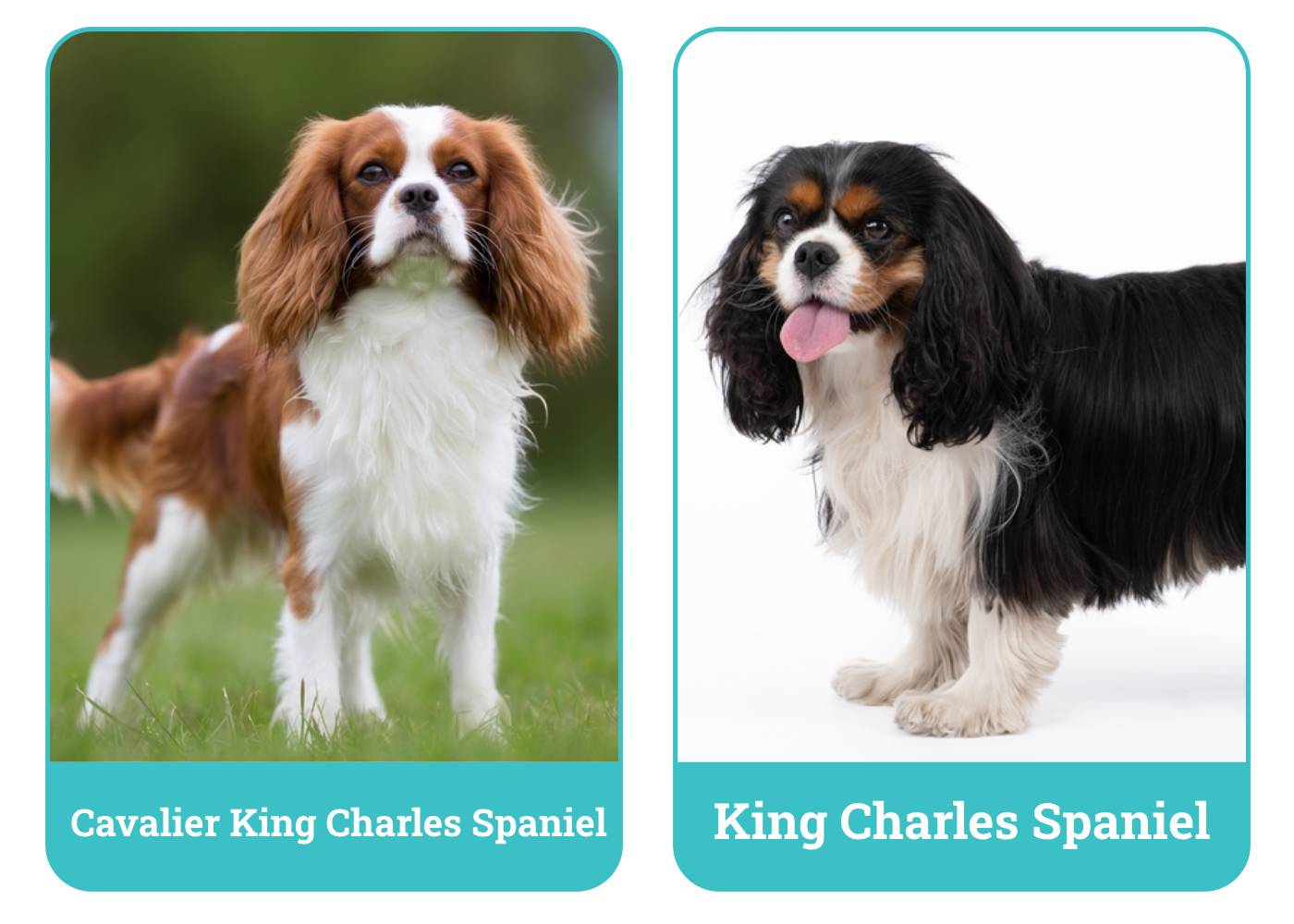
It may be a bit challenging to consider which breed will be best for your home. Both breeds thrive on interacting with their families and prefer not to be left alone for long hours at a time. Both can do well with other animals and children, especially if properly socialized.
King Charles Spaniels may require a bit more exercise and mental stimulation than Cavaliers who love to lounge with their humans. However, both breeds are going to require some outside time and daily walks.
Featured Image Credit: Left – KnipsKaline, Pixabay / Right kate amos, Pexels



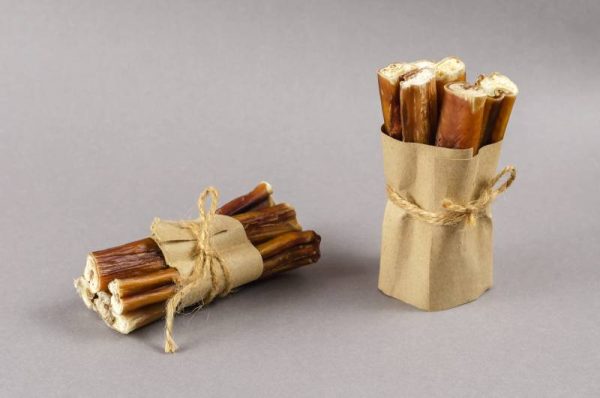

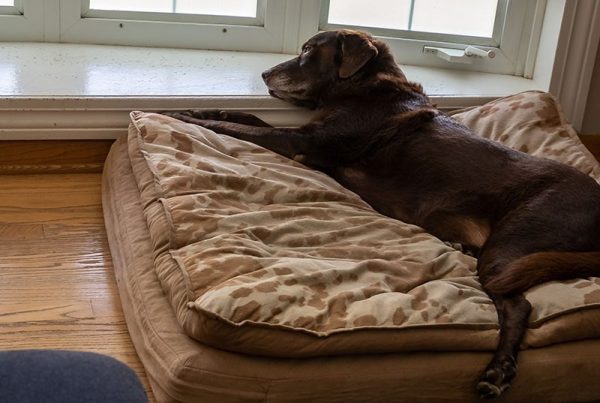
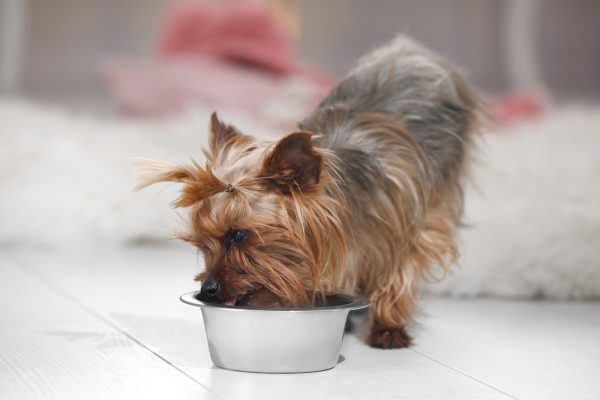
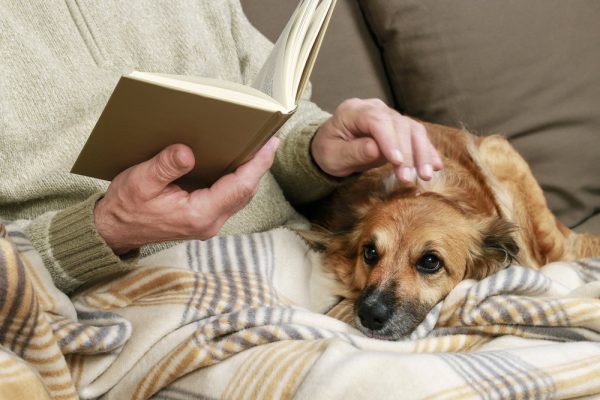
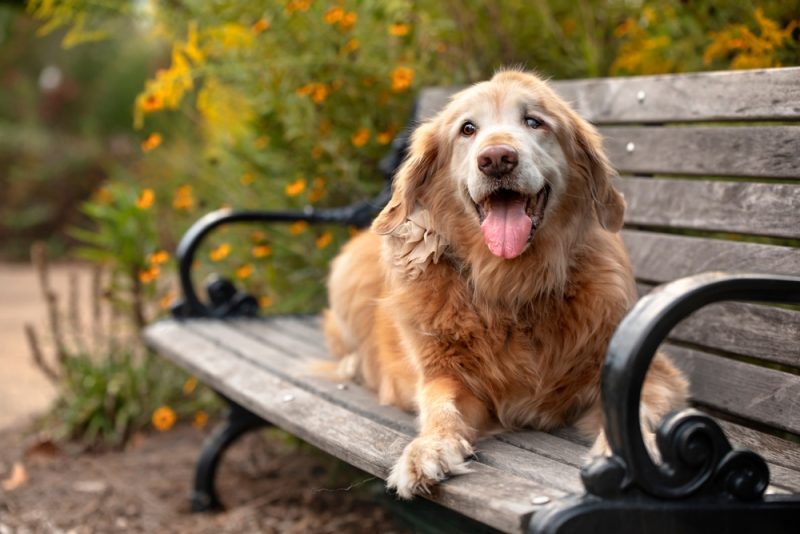

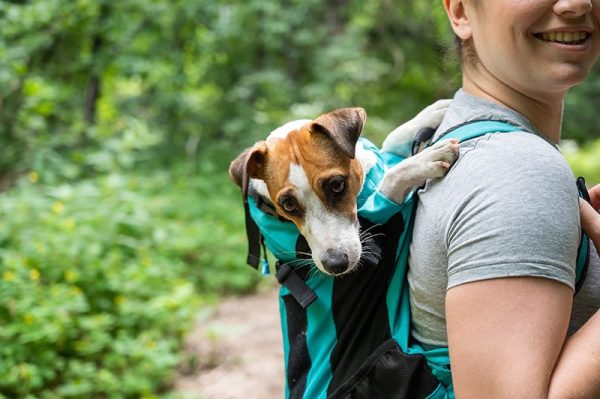

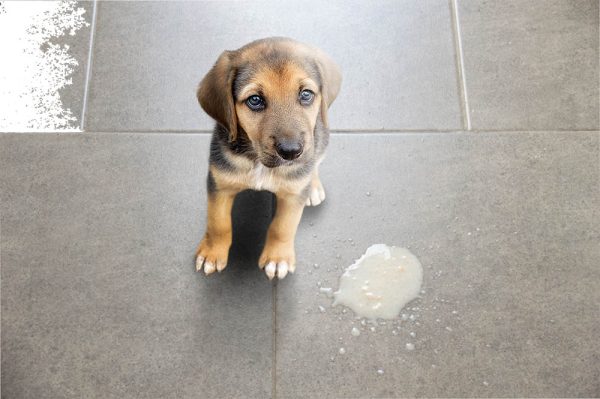


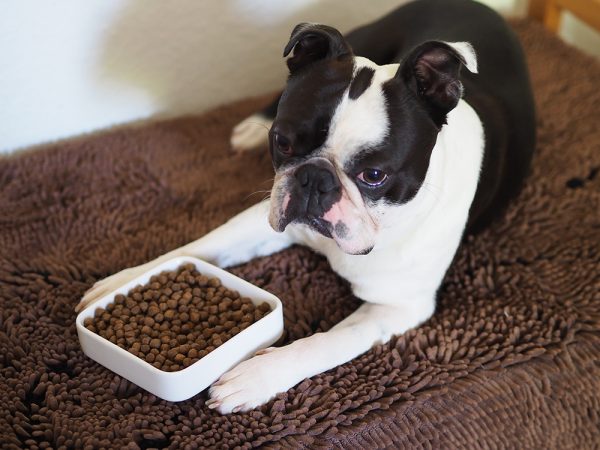

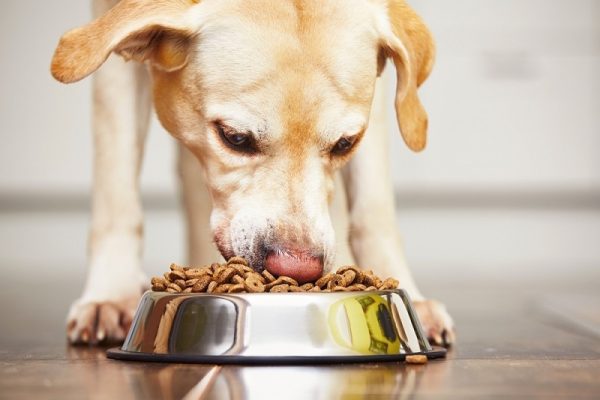
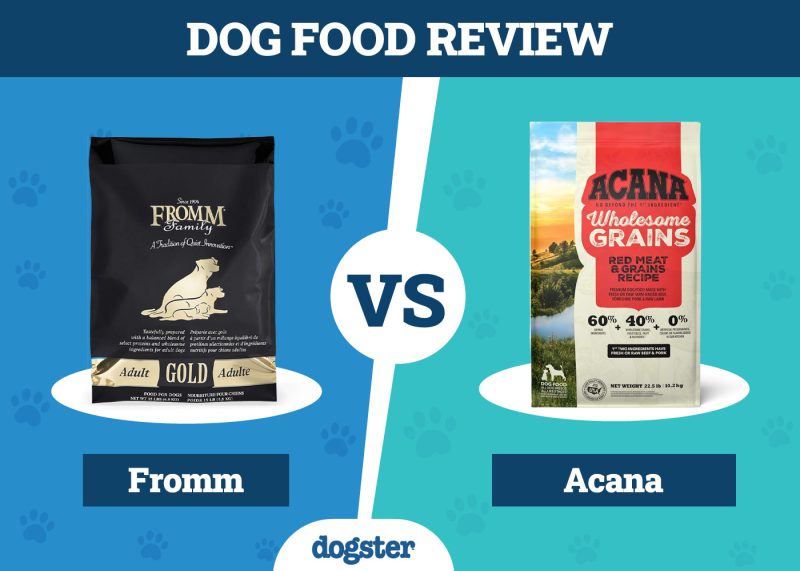

2 Responses
Thank you for educating me on breeds I had lumped together simply as King Charles. I now understand that we would do better with a Cavalier. We adored our French Bulldog but after his death began considering other breeds. The King Charles’ flatter nose might remind us too much of Sumo, and its exercise needs might be too much for us (Sumo was a clown and a couch potato).
Hello,
Thank you for your message. We're happy to hear that you found our article helpful and have a better understanding of these similar breeds. We're sorry for the loss of your French Bulldog, Sumo. It sounds like he was a very special part of your family, so it's wonderful that you're willing to welcome another dog at your home!